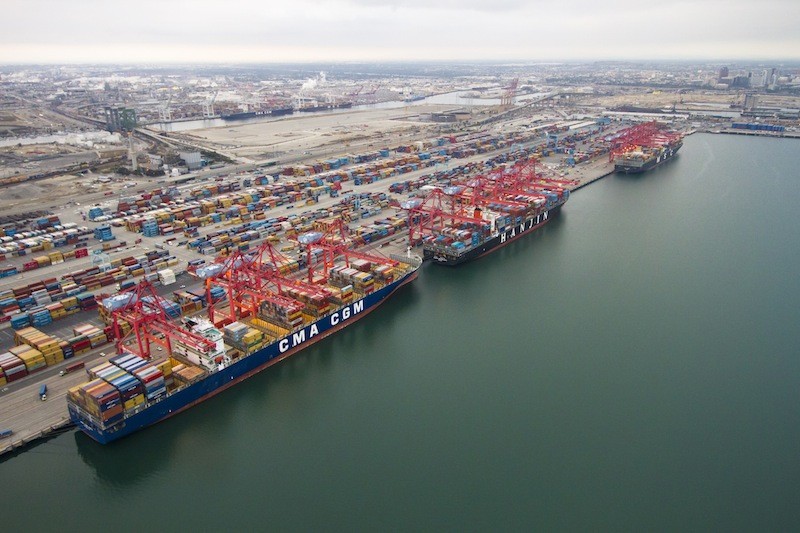Port of Los Angeles Hits Second-Best Year in 2024
The Port of Los Angeles processed over 10.3 million container units in 2024, marking a nearly 20% increase from the previous year and securing its position as the second-best performance...


File photo of containerships at Port of Long Beach’s Pier T. Image credit: Port of Long Beach
The Port of Long Beach in 2012 cut diesel particulates by 81 percent compared to 2005, marking the sixth straight year of improving air quality in the harbor area thanks to the Port’s focused efforts to reduce air pollution caused by the movement of goods, according to an analysis released Monday.
Compared to 2005 emissions levels, all of the key air pollutants from port-related sources were reduced in 2012, the report showed. In addition to the drop in diesel emissions, smog-forming nitrogen oxides and sulfur oxides have been cut 54 percent and 88 percent, respectively. Greenhouse gases were lowered by 24 percent. The reduction in pollutants far outpaced a 10 percent decline in containerized cargo activity in the same period, the report found.
The Port of Long Beach says it can attribute the air quality improvements to bigger, more efficient ships, cleaner engines, the Jan. 1, 2012 deadline for full implementation of the Clean Trucks Program, the increasing use of shore power, and a new low-sulfur fuel rule for ships that started in August 2012.
The results for 2012 mark six straight years of improving air quality in the harbor area thanks to the Port’s focused efforts to reduce air pollution caused by goods movement.
“We’ve been aggressively pursuing cleaner air for a long time and as you can see from these numbers, we are succeeding. We’ve committed to do even more, to continue to reduce air pollution and its health effects,” said Long Beach Board of Harbor Commissioners President Thomas Fields.
Each year, more than $150 billion in trade flowing through the Port of Long Beach, creating more than 300,000 jobs in the Southern California region.
The report released Monday examines data from the 2012 calendar year. The study’s results were reviewed by the U.S. Environmental Protection Agency, the California Air Resources Board and the South Coast Air Quality Management District.
The annual analysis of air pollution from port sources ― literally an “emissions inventory” ― is conducted to check the Port’s progress in improving air quality. The San Pedro Bay Ports Clean Air Action Plan ― created in 2006 ― maps out a strategy to reduce or prevent pollution from the ships, trucks, locomotives, tractors and cranes that move cargo.
The full 2012 Emissions Inventory Report can be downloaded HERE.
Join the gCaptain Club for curated content, insider opinions, and vibrant community discussions.


Join the 108,805 members that receive our newsletter.
Have a news tip? Let us know.







Maritime and offshore news trusted by our 108,805 members delivered daily straight to your inbox.



Essential news coupled with the finest maritime content sourced from across the globe.
Sign Up